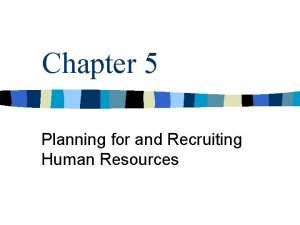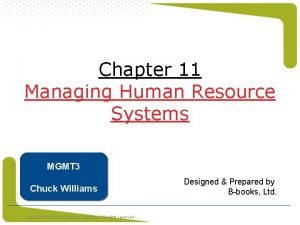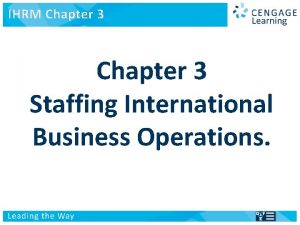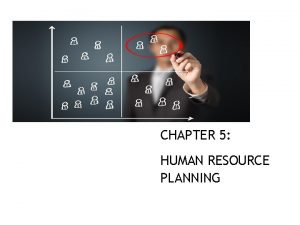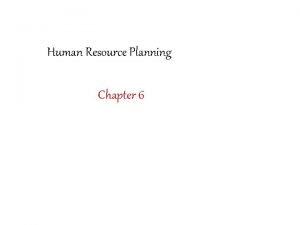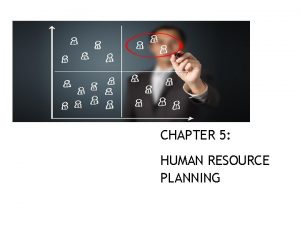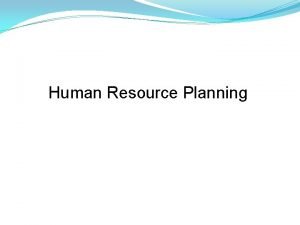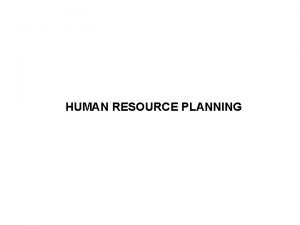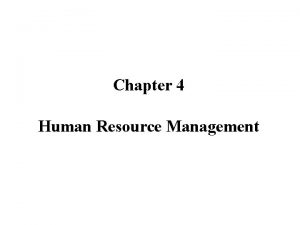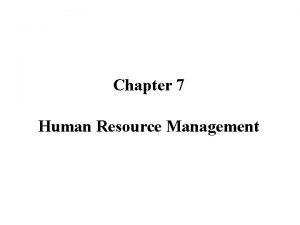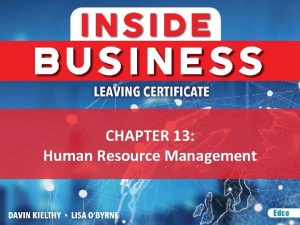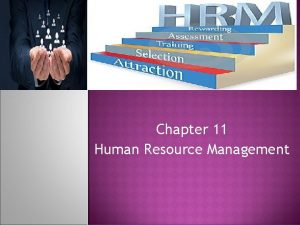Chapter 4 Human Resource Planning Human Resource Management











- Slides: 11

Chapter 4 Human Resource Planning Human Resource Management, 5 E 1

Learning Objectives n Understand the nature and importance of HRP n Identify and describe factors affecting HRP n Describe the stages in HRP process n List pre-requisites for effective HRP Human Resource Management, 5 E 2

Factors Affecting HRP n Type and strategy of organization n Organisational growth cycles and planning n Environmental uncertainties n Time horizon n Type and quality of information n Nature of jobs filled n Outsourcing Human Resource Management, 5 E 3

Factors Affecting HRP Organisationa l Growth Cycle and Planning Type and Strategy of Organisation Environmenta l Uncertainties HRP Time Horizons Outsourcing Type and Quality of Forecasting Information Nature of Jobs being Filled Human Resource Management, 5 E 4

HRP Process Environment Organisational Activities and Policies HR Needs Forecast HR Supply Forecast HR Programming HRP Implementation Control and Evaluation of Programme Surplus Restricted Hiring Reduced Hours VRS, Layoff, etc Shortage Recruitment Selection, etc Human Resource Management, 5 E 5

HR Demand Forecasting Techniques n Managerial Judgment n Ratio-trend Analysis n Work Study Technique n Delphi Technique n Flow Models Human Resource Management, 5 E 6

HR Supply Forecast n Present Employees i). Skill Inventiry ii). Management Inventory Human Resource Management, 5 E 7

Human Resource Information System (HRIR) Use of computers for collecting, sorting, maintaining, retrieving and validating HR data is popularly known as Human Resource Information System (HRIS). Human Resource Management, 5 E 8

Uses of a Human Resource Information Systems (HRIS) Employee and Labour Relations • Union Negotiation Costing • Auditing Records • Attitude Survey Results • Exit Interview Analysis • Employee Work History HR Planning and Analysis • Organisation Charts • Staffing Projections • Skills Inventories • Turnover Analysis • Absenteeism Analysis • Restructuring Costing • Internal Job Matching • Job Description Tracking Health, Safety and Security • Safety Training • Accident Records • Material Data Records Staffing • Recruitment Sources • Applicant Tracking • Job Offer Refusal Analysis HRIS Compensation and Benefits • Pay Structures • Wage/Salary Costing • Flexible Benefit Administration • Vacation Usage • Benefits Usage Analysis Equal Employment • Affirmative Action Plan • Applicant Tracking • Workforce Utilisation • Availability Analysis HR Development • Employee Training Profiles • Training Needs Assessments • Succession Planning • Career Interests and Experience Human Resource Management, 5 E 9

n Internal Supply i). Inflows and Outflows ii). Turnover Ratio iii). Conditions of Work and Absenteeism iv). Productivity Level v). Movement Among Jobs Human Resource Management, 5 E 10

Strategic HR Initiatives Strategic HR Initiative Strategies for Managing Shortages Strategies for Managing Surplus • Recruit new permanent employees • Offer incentives to postpone retirement • Re-hire retirees part-time • Attempt to reduce turn-over • Work current staff overtime • Subcontract work to another company • Hire temporary employees • Redesign job process so that fewer employees are needed • • • Hiring freeze Do not replace those who leave Offer VRS schemes Reduce work hours Leave of absence Across the board pay-cuts Layoffs Reduce outsourced work Employee training Switch to variable pay plan Expand operators Human Resource Management, 5 E 11
 Chapter 5 personnel planning and recruiting
Chapter 5 personnel planning and recruiting Time management in human resource management
Time management in human resource management Retail store organizational structure
Retail store organizational structure Management vs human resource management
Management vs human resource management Human resource management chapter 2
Human resource management chapter 2 Chapter 9 human resources management
Chapter 9 human resources management Chapter 11 human resource management
Chapter 11 human resource management Human resource management chapter 1
Human resource management chapter 1 Human resource management chapter 1
Human resource management chapter 1 Human resources department structure
Human resources department structure Human resource management lecture chapter 1
Human resource management lecture chapter 1 Types of international assignment in ihrm
Types of international assignment in ihrm
